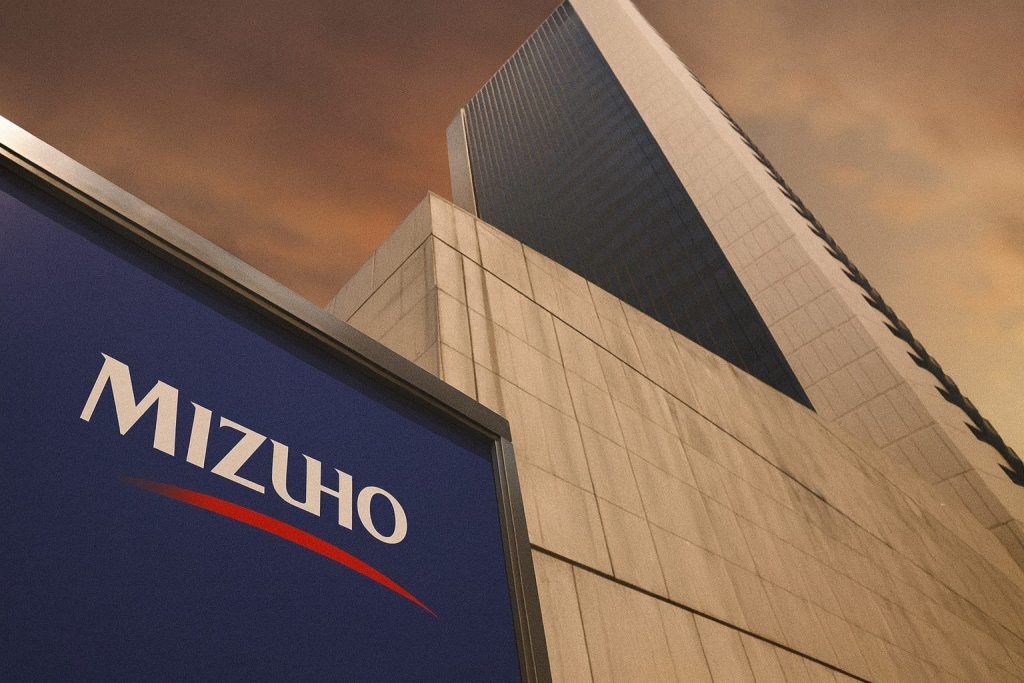Tokyo Electric Power Company Holdings, Incorporated (TEPCO, TSE: 9501, ADR: TKECY) extended its rebound on Thursday, November 27, 2025, as investors continued to price in the long‑awaited restart of the Kashiwazaki‑Kariwa nuclear power plant and digest fresh commentary on Japan’s broader nuclear comeback.
The stock moved higher even as the company’s latest financials still show a ¥712 billion half‑year net loss tied to Fukushima‑related compensation and disaster costs. [1]
Here’s a deep dive into TEPCO’s share price today, all the latest news as of November 27, 2025, and what it may mean for shareholders and watchers of Japan’s power sector.
TEPCO share price today: third straight gain after a wild November
Fresh data from Investing.com shows that TEPCO’s Tokyo‑listed stock closed on November 27, 2025 at roughly: [2]
- Close:¥825.1
- Open: ¥802.0
- Intraday range: ¥792.5 – ¥826.0
- Volume: about 40.9 million shares
- Daily move:+3.06% vs Wednesday’s close
This builds on a sharp two‑day rebound:
- Nov 26: Closed at ¥800.6, up 4.59% (range ¥774.4–¥806.3; volume ≈83.0 million). [3]
- Nov 25: Closed at ¥765.5, down 6.41%, after swinging between ¥730.2 and ¥832.5 on very heavy volume of about 183 million shares. [4]
Even after today’s move, TEPCO trades below mid‑November peaks:
In the U.S., the unsponsored ADR TKECY last closed around $4.92 on November 25, within a 52‑week range of about $2.26–$5.80. [7]
So today’s action looks like consolidation in the low‑¥800s after a month in which the stock:
- Surged on hopes of a Kashiwazaki‑Kariwa restart.
- Sold off sharply on security concerns and profit‑taking.
- Is now stabilizing as fresh analysis highlights both upside and lingering risks.
Today’s news (27 November 2025): Nuclear restarts framed as an “AI era” power play
The most explicitly dated TEPCO‑related coverage on November 27, 2025 comes from Maeil Business Newspaper (MK, Korea). The article looks at Japan’s nuclear policy shift and notes that Japan, having shut down most reactors after the 2011 Great East Japan Earthquake, is now restarting plants one after another to cope with surging electricity demand. [8]
Key points with direct relevance to TEPCO:
- The piece links Japan’s nuclear revival to power‑hungry AI data centers, calling them “power‑eating hippos” and arguing that nuclear output will be needed to support digital infrastructure. [9]
- It highlights Hokkaido’s plan to restart the Tomari plant and then explicitly references Niigata Governor Hideyo Hanazumi’s recent approval of TEPCO’s Kashiwazaki‑Kariwa restart, describing it as the first nuclear plant restart attempt by TEPCO since Fukushima. [10]
In other words, today’s coverage doesn’t unveil a brand‑new TEPCO decision, but it repackages recent developments into a broader story:
“Japan is leaning on nuclear again – and TEPCO’s restart is the symbol of that shift.”
For a stock as headline‑sensitive as TEPCO, this kind of framing helps keep nuclear restart hopes in the spotlight and supports the bullish narrative behind the recent price recovery.
Kashiwazaki‑Kariwa restart: what has actually been decided
The real game‑changing news for TEPCO landed over the past week, and is still driving trading today.
1. Governor approval for Units 6 and 7
Multiple sources confirm that Niigata Prefecture Governor Hideyo Hanazumi has now approved the restart of Units 6 and 7 at the Kashiwazaki‑Kariwa nuclear power plant (KK): [11]
- KK is the world’s largest nuclear power plant by capacity (seven units, ~8.2 GW).
- Units 6 and 7 together provide around 2,710 MW of capacity — roughly one‑third of the plant. [12]
- The plant has been offline since the March 2011 earthquake and tsunami, which triggered TEPCO’s Fukushima Daiichi meltdown. [13]
The governor’s green light, announced on November 21, removes the most important local hurdle. A formal nod from the Niigata Prefectural Assembly, expected to be debated in December, is still needed before TEPCO can proceed to final central‑government inspections and physical restart steps. [14]
Some reports suggest that, if all approvals and inspections line up, removal of control rods and initial restart operations could begin as early as January 2026, though timelines remain tentative. [15]
2. Potential profit boost
Reuters and domestic outlets have repeatedly pointed out why the market cares: a KK restart could transform TEPCO’s earnings profile. [16]
Analysts and officials estimate that:
- Restarting Units 6 and 7 could boost TEPCO’s annual profit by roughly ¥100 billion, mainly by displacing expensive fossil fuel imports. [17]
- It would meaningfully reduce Japan’s LNG and coal import bill, improving energy security and supporting decarbonization targets. [18]
Given TEPCO’s massive Fukushima‑related costs and state oversight, that potential profit uplift is a big part of why the stock has rallied dozens of percent year‑to‑date despite continuing headline risk. [19]
Security and regulatory overhang: NRA document mishandling and anti‑terrorism flaws
The bullish restart story has been tempered by ongoing security concerns at Kashiwazaki‑Kariwa.
1. Document mishandling flagged by the nuclear regulator
On November 20, Japan’s Nuclear Regulation Authority (NRA) disclosed that confidential nuclear security documents at KK had been mishandled by TEPCO staff: [20]
- An employee copied classified documents on nuclear material protection and kept them at his desk in violation of protocol.
- In other cases, confidential materials were mistakenly handed to a subcontractor, and unauthorized tools were brought into secure areas.
- The NRA is continuing inspections, though no leakage of sensitive information outside the company has been confirmed so far.
Nikkei and other local coverage cited by Reuters suggest these incidents are unlikely to derail the restart plan, but they underscore TEPCO’s long‑running struggle to meet nuclear security expectations. [21]
2. Earlier anti‑terrorism issues and “uncertainty” narrative
Separate reporting from Japanese media has highlighted other security flaws and the broader business risk even after a restart: [22]
- Japan Today recently described another faulty anti‑terrorism measure at KK, while noting the central government’s eagerness to see the plant back online. [23]
- Jiji Press / Nippon.com and The Japan Times stress that business uncertainty will remain high for TEPCO even with reactors running, as it still carries enormous compensation and decommissioning obligations from Fukushima. [24]
For investors, the takeaway is that regulatory and reputational risk hasn’t gone away – it’s just being balanced against the scale of potential earnings recovery.
Financial backdrop: big operational improvement, but a ¥712 billion net loss
TEPCO’s FY2025 second‑quarter (interim) results, released on October 30, 2025, provide crucial context for today’s stock move. [25]
According to TEPCO’s financial materials and follow‑up coverage:
- For the six months ending September 30, 2025,
- Segment‑level ordinary income actually rose across TEPCO’s core subsidiaries (Fuel & Power, Power Grid, Energy Partner, Renewable Power), reflecting a recovery in underlying operations thanks to improved fuel cost pass‑through and lower grid balancing costs. [28]
The massive bottom‑line loss is largely driven by extraordinary charges:
- Updated estimates for nuclear damage compensation.
- Ongoing disaster‑recovery and decommissioning costs tied to Fukushima Daiichi. [29]
In short:
Operating businesses are profitable and improving, but Fukushima‑related obligations still dominate reported earnings.
That’s precisely why a high‑margin nuclear restart at Kashiwazaki‑Kariwa — plus continued state support — is seen as so pivotal.
Fukushima compensation and fresh NDF grant
Another piece of recent news still resonating in today’s trading is TEPCO’s latest grant from the Nuclear Damage Compensation and Decommissioning Facilitation Corporation (NDF).
- On November 24–25, TEPCO disclosed that it had received about ¥10.9 billion in NDF funding, part of the long‑running scheme to support nuclear damage compensation. [30]
- Market coverage notes that while this sum is small relative to TEPCO’s overall liabilities, it reinforces the message that the government and NDF continue to backstop Fukushima‑related payments. TechStock²+1
At the same time, TEPCO continues to move forward on treated water discharge from Fukushima Daiichi. TEPCO reported starting the fifth round of FY2025 ALPS‑treated water discharge on October 30, with domestic media tracking ongoing releases and environmental monitoring results. [31]
For equity markets, the combination of steady state support plus incremental progress on decommissioning helps underpin the idea that Fukushima costs, while huge, are at least structured and predictable.
Valuation: cheap on sales and book, expensive on controversy
Despite strong price momentum, several valuation metrics still paint TEPCO as a “controversially cheap” utility.
1. Price‑to‑sales discount
A recent Simply Wall St analysis on November 3 highlights that TEPCO trades at a price‑to‑sales ratio of around 0.2x, based on a share price near ¥772 at that time. [32]
- That’s well below the approximately 1.1x average for Asian electric utilities and below many domestic peers, suggesting a deep discount to sector norms. [33]
- The article characterizes TEPCO as undervalued on revenue, while warning that nuclear restart uncertainty and disaster‑related costs remain key risk factors. [34]
2. Price‑to‑book below 0.5x
On the ADR side, FinanceCharts estimates that TEPCO’s price‑to‑book ratio for TKECY was about 0.42–0.45 in late November 2025, based on a market cap near $8–9 billion and book value around $19 billion. [35]
A P/B under 0.5x typically implies:
- Investors are pricing in significant risk to the asset base (for TEPCO, that’s mainly nuclear and grid assets).
- Or they doubt that future earnings will fully reflect the theoretical asset value.
3. Performance snapshot
According to Simply Wall St, TEPCO shares have: [36]
- Risen over 60% year‑to‑date.
- Delivered around 23% total shareholder return over one year and about 170% over five years.
That rally has compressed some of the “distressed” discount — but not removed it. TEPCO is still priced below peers on sales and book, reflecting its unusual blend of:
- High potential upside from nuclear restarts and grid investment for AI data centers. [37]
- High structural risk from Fukushima legacy costs and strict nuclear oversight.
How today’s 3% move fits into the bigger TEPCO story
Putting it all together, TEPCO’s ~3% gain today looks less like a reaction to a single new headline and more like a continuation of a multi‑week repricing driven by:
- Concrete progress on Kashiwazaki‑Kariwa
Governor Hanazumi’s approval of Units 6 and 7 has turned a long‑debated “if” into a practical “when,” even though the prefectural assembly and final inspections still lie ahead. [38] - Reframing of nuclear power as an AI‑era necessity
Today’s MK article and recent market reports about Tomari and other plants help shift the debate from “restarting TEPCO’s reactors” to “securing enough electricity for data centers and economic growth,” which can be a supportive narrative for utilities with nuclear fleets. [39] - Evidence that operations are improving despite the headline net loss
TEPCO’s Q2 numbers show stronger ordinary income across key subsidiaries and confirm that the worst of fuel‑price volatility has eased, even if extraordinary Fukushima charges still dominate the bottom line. [40] - Valuation screens flagging TEPCO as “undervalued but risky”
Low price‑to‑sales and price‑to‑book ratios continue to attract value‑oriented investors who are comfortable underwriting political, regulatory and reputational risk. [41]
At the same time, risks remain front‑and‑center:
- NRA scrutiny of security lapses at KK. [42]
- The possibility of new safety findings or delays in the assembly’s approval. [43]
- Long‑tail Fukushima costs and potential policy shifts that could alter the economics of nuclear power. [44]
Key numbers for TEPCO stock (TSE:9501) – as of November 27, 2025
Approximate snapshot using the latest available market and company data: [45]
- Ticker (Tokyo): 9501
- Ticker (ADR): TKECY (OTC US, 1:1 with Tokyo‑listed shares)
- Close (Nov 27, 2025):¥825.1
- Day change: +3.06%
- Day range: ¥792.5 – ¥826.0
- 3‑day move (Nov 25–27): from ¥765.5 to ¥825.1 (net +7.8%)
- Recent 52‑week range: ~¥360 – ¥939
- ADR last close (Nov 25, 2025): ~$4.92; 52‑week range ~$2.26 – $5.80
- FY2025 H1 net sales: ¥3,150.2 billion (down 6.1% YoY)
- FY2025 H1 net income:–¥712 billion (loss), mainly due to Fukushima‑related extraordinary losses
- Price‑to‑sales: ~0.2x (vs ~1.1x Asian utility average, per Simply Wall St)
- Price‑to‑book (ADR): ~0.42–0.45x in late November
References
1. en.kabutan.com, 2. www.investing.com, 3. www.investing.com, 4. www.investing.com, 5. ca.investing.com, 6. ca.investing.com, 7. www.google.com, 8. www.mk.co.kr, 9. www.mk.co.kr, 10. www.mk.co.kr, 11. www.reuters.com, 12. www.reuters.com, 13. www.ans.org, 14. www.world-nuclear-news.org, 15. www.ntv.co.jp, 16. www.reuters.com, 17. www.reuters.com, 18. www.reuters.com, 19. simplywall.st, 20. www.reuters.com, 21. www.reuters.com, 22. japantoday.com, 23. japantoday.com, 24. www.nippon.com, 25. www.tepco.co.jp, 26. www.tepco.co.jp, 27. en.kabutan.com, 28. www.tepco.co.jp, 29. simplywall.st, 30. www.marketscreener.com, 31. www.tepco.co.jp, 32. simplywall.st, 33. simplywall.st, 34. simplywall.st, 35. www.financecharts.com, 36. simplywall.st, 37. www.reuters.com, 38. www.reuters.com, 39. www.mk.co.kr, 40. www.tepco.co.jp, 41. simplywall.st, 42. www.reuters.com, 43. www.nippon.com, 44. www.reuters.com, 45. www.investing.com







